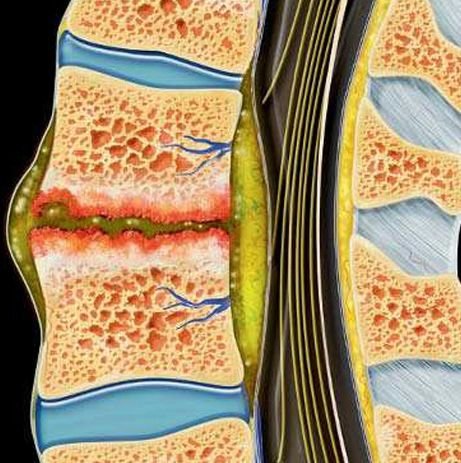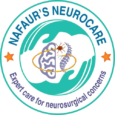Infections following Spinal Instrumentation
Infections following Spinal Instrumentation
Pediatric infections following spinal instrumentation are complications that arise after surgeries where metal implants, rods, screws, or fusion materials are placed to correct spinal deformities or stabilize the spine. These infections can occur early (within weeks) or late (months to years after surgery), and can severely affect spinal stability, wound healing, and neurological function. In Bangladesh, increasing numbers of children are undergoing spinal surgeries for conditions such as scoliosis, spinal tumors, trauma, and tuberculosis, and postoperative infections remain a serious concern. Dr. Md. Nafaur Rahman, a leading pediatric neurosurgeon, provides specialized care for diagnosing, treating, and preventing these infections with an emphasis on safe surgical techniques, infection control, and child-specific rehabilitation protocols. 🌍 Significance in the Bangladesh Context Due to limited resources, variable infection control standards, and delayed recognition of surgical complications, postoperative spinal infections are more common in developing countries like Bangladesh. The situation is further complicated by: Use of reprocessed implants in under-resourced hospitals Inadequate antibiotic prophylaxis or sterile technique Malnutrition, poor hygiene, and immune compromise in pediatric patients Poor postoperative follow-up in rural and semi-urban settings As one of Bangladesh’s most experienced pediatric spine surgeons, Dr. Nafaur Rahman applies evidence-based approaches to minimize infection risks and manages complications with precision and care. ⚠️ Types of Post-Spinal Instrumentation Infections Superficial Incisional Infections Occur at skin and subcutaneous level Present within 30 days Often managed with antibiotics and dressing Deep Wound Infections Involve muscles, fascia, and spinal implants May present with fever, pus, or wound breakdown Delayed/Chronic Infections Occur months or years after surgery Often due to low-grade organisms or tuberculosis May present with spinal pain, abscess, or implant loosening 🧒 Common Symptoms and Clinical Clues 🌡️ Persistent or new-onset fever after surgery 🩹 Redness, swelling, or discharge from the surgical wound 😣 Back pain at or near the surgical site ⚠️ Neurological signs: weakness, numbness, or bladder issues 🦴 Prominence or movement of implants under skin ⏳ Late signs: spinal instability, draining sinus, poor weight gain “Any child with fever and back pain after spinal surgery must be evaluated immediately for possible infection.” — Dr. Md. Nafaur Rahman 🧪 Diagnosis: Timely and Targeted Dr. Nafaur Rahman uses a combination of imaging, laboratory work, and clinical judgment for accurate diagnosis: 🧲 MRI with contrast – Best for detecting abscess or deep infection 💻 CT scan – Useful to evaluate implant position or bone destruction 🩸 ESR, CRP, CBC – Elevated in most infections 🧫 Wound/pus culture – Essential for identifying bacteria 🦠 Blood culture – In systemic infection 🔬 Histopathology/Biopsy – For suspected tuberculosis or fungal infection 🧬 GeneXpert – Highly specific for TB detection in spine-related infections 🛠️ Management of Post-Instrumentation Spinal Infections 🧴 Non-Surgical/Medical Management (Early and Superficial): IV antibiotics based on culture sensitivity Regular wound dressing and debridement Nutritional support to boost immunity Use of bracing to support spinal stability if required Close monitoring with blood tests and imaging 🔧 Surgical Management (For Deep, Persistent, or Late Infections): Surgical debridement to remove infected tissue Implant removal or replacement if loosened or surrounded by pus Drainage of abscesses (epidural, paraspinal, or subfascial) Stabilization with new instrumentation in selected cases Anti-tubercular therapy if TB is detected Wound vacuum therapy (VAC) in cases with large infected wounds “Early surgical cleaning often preserves implants and saves children from repeat surgeries.” — Dr. Md. Nafaur Rahman 🔁 Recovery and Rehabilitation 📅 Weekly follow-ups with CRP/ESR monitoring 🧒 Pediatric physiotherapy for spinal mobility and function 🥗 Nutritional rehab to support wound healing 📚 School reintegration and mental health support 💉 Completion of antibiotic or ATT regimen under medical supervision 🚨 Risks of Untreated Post-Spinal Infections 🧑🦽 Permanent neurological deficits or spinal cord damage 🔄 Chronic osteomyelitis or implant failure 💀 Sepsis or systemic organ failure 🦴 Progressive spinal deformity 🚫 Recurrent surgeries and long-term disability 👨⚕️ Why Choose Dr. Md. Nafaur Rahman? 🧠 Pioneer in pediatric spinal surgery and infection management in Bangladesh 🏥 Based at National Institute of Neurosciences & Hospital (NINS) 🔬 Advanced training in infection control and spinal hardware revision 🧒 Child-focused care with minimal psychological stress 🌐 Full multidisciplinary team: infectious disease, nutrition, rehab 📞 Need Expert Help After Spinal Surgery? Dr. Md. Nafaur Rahman Assistant Professor, Pediatric Neurosurgery, NINS Chief Consultant, Bangladesh Paediatric Neurocare Centre 📱 For Serial/Appointments: 📞 01912988182 | 📞 01607033535 🌐 Visit: www.neurosurgeonnafaur.com
Infections following Spinal Instrumentation


